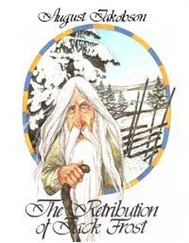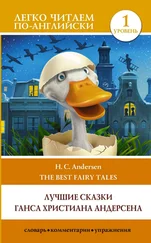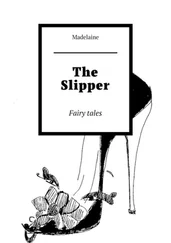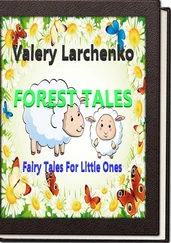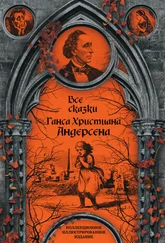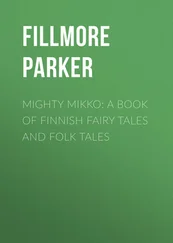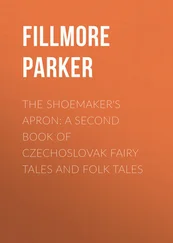Ганс Андерсен - Fairy Tales
Здесь есть возможность читать онлайн «Ганс Андерсен - Fairy Tales» весь текст электронной книги совершенно бесплатно (целиком полную версию без сокращений). В некоторых случаях можно слушать аудио, скачать через торрент в формате fb2 и присутствует краткое содержание. Жанр: Старинная литература, на английском языке. Описание произведения, (предисловие) а так же отзывы посетителей доступны на портале библиотеки ЛибКат.
- Название:Fairy Tales
- Автор:
- Жанр:
- Год:неизвестен
- ISBN:нет данных
- Рейтинг книги:4 / 5. Голосов: 1
-
Избранное:Добавить в избранное
- Отзывы:
-
Ваша оценка:
- 80
- 1
- 2
- 3
- 4
- 5
Fairy Tales: краткое содержание, описание и аннотация
Предлагаем к чтению аннотацию, описание, краткое содержание или предисловие (зависит от того, что написал сам автор книги «Fairy Tales»). Если вы не нашли необходимую информацию о книге — напишите в комментариях, мы постараемся отыскать её.
Fairy Tales — читать онлайн бесплатно полную книгу (весь текст) целиком
Ниже представлен текст книги, разбитый по страницам. Система сохранения места последней прочитанной страницы, позволяет с удобством читать онлайн бесплатно книгу «Fairy Tales», без необходимости каждый раз заново искать на чём Вы остановились. Поставьте закладку, и сможете в любой момент перейти на страницу, на которой закончили чтение.
Интервал:
Закладка:
FILM
Between the 1930s and the 1950s the Walt Disney Company distinguished itself as the most enterprising animation studio and produced a string of critically acclaimed feature-length cartoons, including Snow White (1937) and Bambi (1942). But as the cost of producing animation rose, Disney’s commitment to major animation efforts waned, and after releasing Sleeping Beauty (1959), the company failed to produce a remarkable animated picture for nearly thirty years. In 1989 The Little Mermaid, based on Andersen’s fairy tale, put Disney back on the map. Written and directed by John Musker and Ron Clements, The Little Mermaid showcases bright, fluid animation in a palette based on the sea—coral colors like fuchsia and butter yellow alongside shades of aquamarine. The film is buoyed by the witty songwriting of Howard Ashman and Alan Menken (Little Shop of Horrors).
What makes The Little Mermaid a classic equal to the movies of Disney’s golden age is the clever, rebellious, and winsome character Ariel. The crux of the story is Ariel’s defiance of her father, King Triton, ruler of the sea, who forbids her from venturing above water into the human realm. But when she falls in love with a handsome prince and swaps her trademark voice (supplied by Jodi Benson) for a pair of human legs with the help of Ursula, a cunning sea-witch octopus, Ariel must rely on her friends Flounder and Sebastian, a calypso crab. Together the three wend their way toward romantic happiness and a state of harmony among creatures of the land and sea—in a departure from Andersen’s original, in which the main character is transmuted into sea-foam.
The trend of using computer-generated imagery to supplement animation began, albeit to a limited degree, with The Little Mermaid. The Oscar category Best Animated Picture was not instituted until the 2001 Academy Awards, well into the age of CGI animation. Nonetheless, The Little Mermaid held its own at the 1990 Oscars. Menken and Ashman were nominated for their song “Kiss the Girl,” which was beat out by another, even catchier number from the film: Sebastian’s “Under the Sea.” Alan Menken earned an award for his score.
After regaining its status as an animator with a spate of releases during the 1990s, Disney again turned to Andersen as source material for The Emperor’s New Groove (2000). Written by David Reynolds and directed by Mark Dindal, the film takes Andersen’s “The Emperor’s New Clothes” as a loose premise and plays upon it most creatively. The result is a fun-filled romp, with the Peruvian emperor Kuzco, played with sarcastic relish by David Spade, changed into a Ilama by his embittered adviser Yzma (Eartha Kitt). The Emperor’s New Groove is an episodic journey filled with gags and spectacle, plus musical offerings such as the occasional buddy song sung by Kuzco and John Goodman’s Pacha (a peasant whom Kuzco had earlier threatened to banish) and Tom Jones’s crooning contribution, “Perfect World.” The Emperor’s New Groove earned an Academy Award nomination for Best Song, for “My Funny Friend and Me,” composed by Sting and David Hartley, and performed by Sting.
Disney is not the only film studio to have produced remarkable films based on Andersen’s fairy tales. Paul Grimault and Jacques Prévert produced one of the finest animation films, Le Roi et l’Osieau (The King and the Bird, 1979), based on “The Shepherdess and the Chimney Sweep.” In addition, film studios in Russia, the United Kingdom, Denmark, Czechoslovakia, Germany, and Canada have produced more than thirty films based on such popular tales as “The Princess on the Pea,” “The Emperor’s New Clothes,” and “The Little Mermaid.”
Music
It is fitting that many composers have paid tribute to Andersen with their music, as his remarkable singing voice inspired the childhood nickname “Nightingale” and he later became an accomplished librettist. He counted among his friends composers Robert Schumann, Felix Mendelssohn, Richard Wagner, Franz Liszt, and many others.
Charting Andersen’s influence in Scandinavia alone, Danish author Gustav Hetsch, in H. C. Andersen and Music (1930), listed twenty-nine Nordic composers who had set music to Andersen’s tales and poems or who had written music inspired by Andersen’s life. Christoph Weyse, a Danish composer who was known mainly for his sacred music and songs, and in 1819 was appointed court composer, became Andersen’s first benefactor. Along with Danish poet and dramatist Adam Oehlenschläger, Andersen wrote five cantatas ( singspiels ) and one light opera for Weyse. And Andersen wrote operatic libretti to two works by Sir Walter Scott, both produced in 1832: Weyse’s Kenilworth and I. Bredal’s The Bride of Lammermoor. Andersen’s close friend Schumann based his “Five Songs” (1840) on five pieces from Andersen’s oeuvre of more than a thousand poems. For another collaborator, J. P. E. Hartmann, Andersen wrote the libretto to Little Kirsten (1846), which remains one of the most popular Danish operas.
By this time, Andersen was seen as a literary giant and a national hero. At the relatively young age of forty-five, he completed an epic homage to his homeland, In Denmark I Was Born, that was rendered into music by Henrik Rung (1850); in 1926 Poul Schierbeck premiered his own version, which pays tribute to Andersen and Rung. In 1865 Andersen met Norway’s preeminent composer, Edvard Grieg, in Copenhagen. Their resulting friendship led to Grieg’s collection “The Heart’s Melodies,” which features songs inspired by Andersen, including two for piano and soprano: the teasing, playful “Two Brown Eyes” and “I Love You,” which sounds like a cross between a jazz ballad and a Danish show tune.
After Andersen’s death, musical compositions inspired by his writings multiplied and today show no sign of abating. A list of these, by no means comprehensive, includes Johan Bartoldy’s operetta The Swineherd (1886); Igor Stravinsky’s brief opera The Nightingale (1914); Finn Høffding’s It’s Perfectly True (1943); Frank Loesser’s musical film Hans Christian Andersen (1952); the symphonic works The Most Incredible Thing (1997), by Sven Erik Werner, and The Woman with the Eggs (1998), by the Danish composer known only as Fuzzy; and Svend Hvidtfelt Nielsen’s chamber opera The Little Mermaid (1999-2000).
Comments

Questions

In this section, we aim to provide the reader with an array of perspectives on the texts, as well as questions that challenge those perspectives. The commentary has been culled from sources as diverse as reviews contemporaneous with the works, letters written by the author, literary criticism of later generations, and appreciations written throughout the works’ history. Following the commentary, a series of questions seeks to filter Hans Christian Andersen’s Fairy Tales through a variety of points of view and bring about a richer understanding of these enduring works.
COMMENTS
Søren Kierkegaard[H. C. Andersen] cannot separate the poetic from himself, because, so to speak, he cannot get rid of it, but as soon as a poetic mood has acquired freedom to act, this is immediately overwhelmed, with or without his will, by the prosaic—precisely therefore it is impossible to obtain a total impression.... Andersen totally lacks a life-view.
Читать дальшеИнтервал:
Закладка:
Похожие книги на «Fairy Tales»
Представляем Вашему вниманию похожие книги на «Fairy Tales» списком для выбора. Мы отобрали схожую по названию и смыслу литературу в надежде предоставить читателям больше вариантов отыскать новые, интересные, ещё непрочитанные произведения.
Обсуждение, отзывы о книге «Fairy Tales» и просто собственные мнения читателей. Оставьте ваши комментарии, напишите, что Вы думаете о произведении, его смысле или главных героях. Укажите что конкретно понравилось, а что нет, и почему Вы так считаете.

![Ганс Андерсен - Ганс Чурбан[другой перевод]](/books/95480/gans-andersen-gans-churban-drugoj-perevod-thumb.webp)

